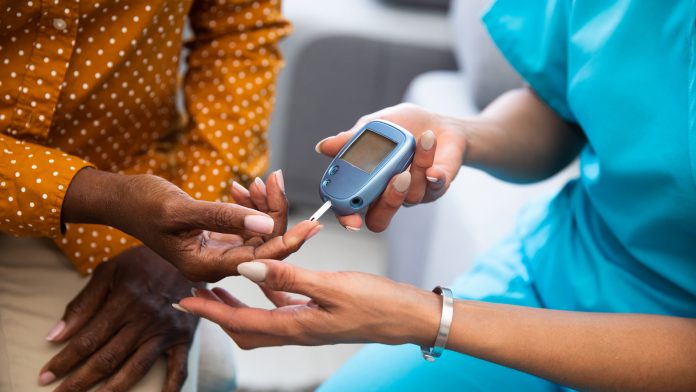
The levels of the long-term blood sugar, HbA1c, can be used accurately to determine the risk of diabetes complications in individuals, according to new research.
A study from Linköping University, Sweden, has found that people with type 1 diabetes should have HbA1c levels lower than 53 mmol/mol (7%) to avoid diabetes complications affecting the eyes and kidneys. The study followed individuals with type 1 diabetes for over 30 years.
The results have been published in Diabetes Care.
HbA1c is a key indicator of health
People with diabetes are likely to experience damage to small blood vessels in various organs. The reasons for this are unclear, but it is known that good control of blood sugar levels can reduce the risk of diabetes complications. However, until now it has not been known what the appropriate levels of HbA1c a person should have to avoid serious damage to the blood vessels in the eyes and kidneys.
“Our study determines accurately the levels of long-term sugar that can avoid complications. This knowledge can increase a person’s motivation to keep their blood sugar level under control,” said Hans Arnqvist, professor emeritus at Linköping University and leader of the study.
The researchers analysed children and adults below the age of 35 who developed type 1 diabetes between 1983 and 1987 and received care in South-East Sweden. During this period 447 patients were diagnosed, each of which was included in the study. The researchers followed the HbA1c values of each patient, reflecting their average blood sugar levels over this period.
Diabetes complications can be fatal
The researchers also monitored the development of eye and kidney damage in these patients for a period of 32-36 years after diagnosis.
The eyes and kidneys are sensitive to high blood sugar levels. Most type 1 diabetes patients are susceptible to small blood vessel damage in their eyes. This damage is usually harmless but occasionally it can develop into proliferative retinopathy, which can lead to blindness. Damaged blood vessels in the kidneys can cause albuminuria, a condition that leads to impaired kidney function and can be fatal.
The blood sugar level in a healthy person is closely controlled, with a maximum HbA1c level of 42 mmol/mol (6.0%).
“The results of our study show that people with type 1 diabetes for at least 32 years should keep their mean long-term sugar level below 53 mmol/mol (7.0%) if they are to completely avoid serious diabetes complications. The risk of eye- and kidney complications increases as the level increases. Our conclusions relate to avoiding diabetes complications arising from blood vessel damage. But if a patient has problems with low blood sugar, hypoglycaemia, it’s not possible to control the blood sugar level so strictly,” said Hans Arnqvist.
In Sweden, target levels of HbA1c are assigned to groups rather than individuals in Sweden. The ideal level for HbA1c suggested by this study agreed with the individual targets recommended by the American Diabetes Association.
The previous follow-up research was conducted 20 years after the diagnosis. This research shows that 30 years after diagnosis, diabetes complications arise at lower blood sugar levels than was the case after 20 years.
More patients experienced diabetes complications, despite not having increased their previous blood sugar levels. This suggests that the threshold for developing diabetes complications is falling. This means the study does not allow for any recommendations to be made regarding the blood sugar levels of people with type 1 diabetes for any longer than 30 years post-diagnosis.






















